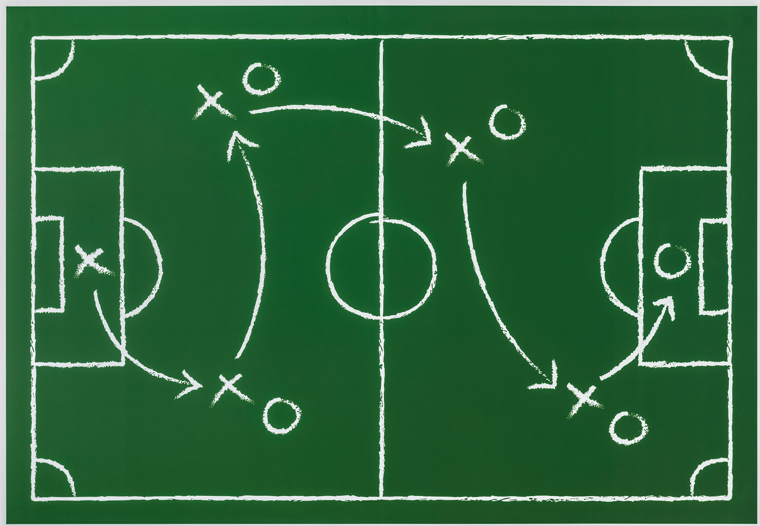Today, the rapid pace of change, the variety of uncertainties, and the intensity of competition compel both organizations and individuals to think and act strategically. However, the concept of “strategy” is often perceived as a term exclusive to corporations. In reality, strategy is not only a corporate tool but also a compass that illuminates our path in personal life.
In this article, I aimed to present a holistic perspective on what strategy is, how it differs from goals and short-term planning, the strategy development process, and its relationship with leadership. I also touched on the concept of personal strategy and offered practical steps to help individuals guide their own lives.
My goal is to transform strategy from being merely a management term into a life tool that everyone can understand, apply, and internalize. I invite you to explore how strategic thinking can make a difference both in business and in personal life.

“Strategy without tactics is the slowest route to victory. Tactics without strategy is the noise before defeat.”
— Sun Tzu, Ancient Chinese Military Strategist
From Historical to Modern Perspectives on Strategy:
The concept of strategy traces its roots back thousands of years. Ancient Chinese thinker Sun Tzu, in his work The Art of War, defined strategy as a mastery of warfare, famously stating that “there is no victory without strategy.” In the modern era, this concept has been adapted to the business world, taking on a much broader framework. Michael Porter contributed a strategic positioning perspective to companies through theories such as competitive advantage and industry analysis, while Peter Drucker combined strategy with managerial vision, helping organizations clarify their objectives.
Definition of Strategy and the Differences Between Goals/Short-Term Planning
Strategy is a planned and long-term roadmap that involves using available resources in the most effective and efficient way to achieve a specific objective. It defines the direction, priorities, and decisions that will guide an organization or individual toward their goals, while taking changing conditions into account.
A common question that arises when discussing strategy is: What are the differences between strategy, goals, and short-term planning?
Differences Between Strategy, Goal, and Short-Term Planning
| Feature | Strategy | Goal | Short-Term Planning |
| Definition | A planned and long-term approach followed to achieve overarching objectives | A specific, measurable outcome to be achieved | Daily, weekly, or monthly tasks to be carried out in pursuit of the goal |
| Time Horizon | Long-term (3–5 years or more) | Mid to long-term (6 months – 3 years) | Short-term (1 day – 6 months) |
| Purpose | To provide a guiding framework | To define clear points of success | To plan actionable steps in alignment with the strategy and goals (like a to-do list) |
| Measurability | Generally abstract; provides direction | Measurable and concrete | Tangible and time-bound |
| Flexibility | Can be adapted to changing conditions | Relatively fixed | Frequently updated based on execution |
Example (for an automotive company):
- Strategy: Achieve a green and digital transformation by transitioning to electric vehicle technology.
- Goal: Reach 30% of total vehicle sales from electric vehicles by the year 2027.
- Short-Term Planning: Begin construction of a new battery plant in the first quarter of 2025.
In Summary:
- Strategy answers the question: “Where are we going and how will we get there?”
- Goal answers the questions: “How much and by when?”
- Short-Term Plan answers the question: “What will we do today?”

A strategy is something like, an innovative new product; globalization, taking your products around the world; be the low-cost producer. A strategy is something you can touch; you can motivate people with; be number one and number two in every business. You can energize people around the message.
Jack Welch
Strategy Development Process
| Step | Process Name | Description | Key Question |
| 1 | Situation Analysis | Evaluation of internal and external environment, competitors, and trends | Where are we now? |
| 2 | Vision, Mission, Values | Defining the organizational direction, purpose, and core principles | Where do we want to go? |
| 3 | Strategic Objectives | Setting measurable and attainable goals | What do we want to achieve? |
| 4 | Strategy Formulation | Identifying the best paths to reach the goals | How will we get there? |
| 5 | Implementation Plan | Planning resources, timelines, responsibilities, and tasks | Who will do what, and when? |
| 6 | Monitoring and Evaluation | Measuring results and identifying opportunities for improvement | Are we succeeding, or do we need to change? |
The Relationship Between Strategy and Leadership
- Strategy is the map of where you’re going.
- Leadership is the person who takes the map in hand, convinces others to embark on the journey, and keeps them motivated along the way.
Strategy Draws Strength from Leadership:
- No matter how perfect a strategy is, its success depends on the power of execution—which lies in leadership.
- If a leader fails to clearly communicate the strategy, motivate the team, and transform the culture, the strategy will remain just words on paper.
- Leadership without strategy is like a captain without a course. A leader who doesn’t know where to go may keep people busy, but won’t lead them to results.
How to Develop Strategic Thinking Skills
| Method | Explanation |
| 1. Continuous Learning | Strategy thrives on knowledge. Follow books, articles, and podcasts on leadership, economics, geopolitics, and competition. |
| 2. Conduct Systematic Analysis | Use strategic tools like SWOT to evaluate problems from a holistic perspective. |
| 3. Think Long-Term | Instead of reacting to short-term issues, consider the 1-year, 3-year, and 5-year impact of your decisions. |
| 4. Create Scenarios | Ask “What if…?” questions. Develop alternative scenarios and be prepared. |
| 5. Think with Data | Intuition is valuable, but strategic thinking requires developing a habit of data-driven decision-making. |
| 6. Challenge Assumptions | Ask critical questions: “Why do we think this way?”, “Is there a better path?” |
| 7. Draw from Cross-Disciplines | Expand your perspective by exploring fields like history, engineering, psychology, or art. |
| 8. Engage with Mentors | Discuss with those who make strategic decisions and learn how they think. |
| 9. Create Quiet Time | Deep thinking requires focus. Set aside time daily for uninterrupted strategic reflection. |
| 10. Seek Feedback | Regularly evaluate the outcomes of your decisions. Analyze mistakes and improve continuously. |
Common Mistakes in Strategy
Developing a strategy is not just about generating big ideas—it’s also about grounding those ideas on the right foundations. However, many organizations and individuals fall into common traps during the strategy development process. These mistakes gradually weaken the strategy’s impact and disrupt its execution. Here are some critical and frequently encountered errors in strategy:
- Confusing strategy with goals: Goals are measurable outcomes; strategy is the path taken to reach those goals. When this distinction is blurred, strategy becomes nothing more than a “list of numeric tasks.”
- Being overly detailed and losing flexibility: While strategies should be well-planned, excessive detail can become overwhelming. It reduces the ability to adapt in the face of unexpected changes. Flexibility is a strategic strength.
- Neglecting resource analysis: Strategies that are overly ambitious or ignore available resources are doomed from the start. A solid strategy must realistically assess existing capacity.
- Focusing only on the short term: When constantly firefighting daily issues, the long-term vision is lost. This turns the strategy into a “crisis management manual.” True strategy is about building the future.
- Ignoring communication and team engagement: No matter how strong a strategy is, if it’s not understood or embraced by employees, it remains just a document on the manager’s desk.

Life is like riding a bicycle. To keep your balance, you must keep moving.
Albert Einstein
Personal Strategy
Personal strategy is a consciously designed long-term roadmap that individuals create to achieve their own life goals. This strategy helps a person determine the most appropriate decisions and priorities by considering their values, strengths, weaknesses, opportunities, and threats.
Personal strategy is the choice to live life with direction rather than by chance. It means thinking of oneself as the CEO of one’s own life. Instead of drifting aimlessly, it is about designing a life with intention and purpose.
Steps of Personal Strategy
| Step | Explanation |
| Vision | What kind of person do I want to become in the long term? |
| Mission | What is my purpose in life? What value do I want to contribute? |
| Values | What principles guide my decisions? |
| Strengths/Weaknesses | How well do I know myself? What should I improve? |
| Goals | Where do I want to be in 1, 5, and 10 years? |
| Resources | What time, education, knowledge, network, and energy do I currently have? |
| Strategic Path | What choices will help me reach these goals? In which areas will I invest? |
Example:
- Vision: To become a globally recognized sustainability consultant within 10 years.
- Mission: To guide companies and individuals toward a greener future.
- Strategy: Pursue an MBA, perfect my English, create content on LinkedIn, and gain experience in three different industries.
Before building your personal strategy, conducting a personal SWOT analysis will help illuminate your path.

The best way to predict the future is to create it.
Peter Drucker
Future Strategies: Key Trends and Approaches
- Agile Strategies
- Change no longer takes years—it happens within months. In the future, strategies will move away from being long-term, rigid plans and evolve into agile structures that are continuously reviewed and adapted in small steps. “It’s not the plan that wins, but the ability to adapt.”
- Data-Driven and AI-Supported Strategies
- Big Data, machine learning, and artificial intelligence are shifting strategic decisions away from intuition and more toward data-driven logic.
- Strategy will no longer be defined solely by humans—hybrid strategies shaped by algorithms will become widespread.
- Sustainability and Impact-Driven Strategies
- Strategies focused on impact, not just profit, will come to the forefront.
- ESG (Environmental, Social, and Governance) based strategies will no longer be “nice to have” but a mandatory competitive requirement.
- Ecosystem Strategies
- Competition is being replaced by collaboration (coopetition). Future strategies will be built not around individual companies, but around partnerships, platforms, and value networks.
- Scenario- and Probability-Based Strategies
- Companies will increasingly focus on scenario planning to develop flexible strategies that account for different future possibilities.
- Culture and Value-Oriented Strategies
- It will no longer be just about what is done, but also why and how it is done.
- Strategies will be designed around building culture, creating social value, and fostering a sense of belonging.
- Talent and Learning Strategies
- Human capital will become the greatest source of competitive advantage.
- Future organizations will build their strategies around talent acquisition, learning agility, and leadership development.
Final Thoughts
Strategy is not just about making plans; it’s about anticipating change, managing resources wisely, and moving forward with determination in the face of uncertainty. Whether you’re leading a company or seeking direction in your personal life, strategic thinking is one of the most powerful tools that sets you apart from the ordinary.
I hope this article has broadened your perspective on the concept of strategy and inspired you to start—or strengthen—your own strategic journey. Remember, shaping the future begins today, and starting with a strong strategy is always the wisest step forward.

